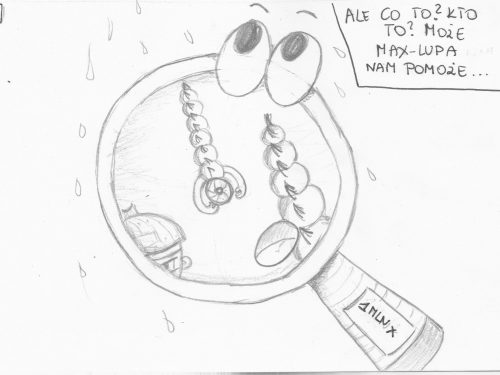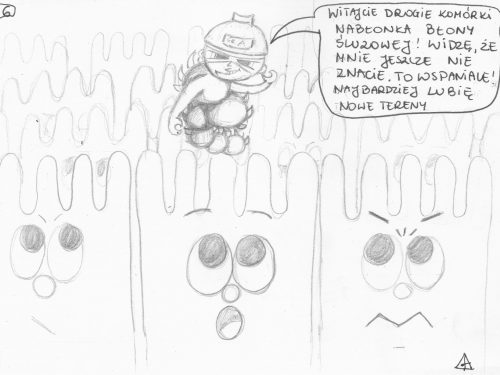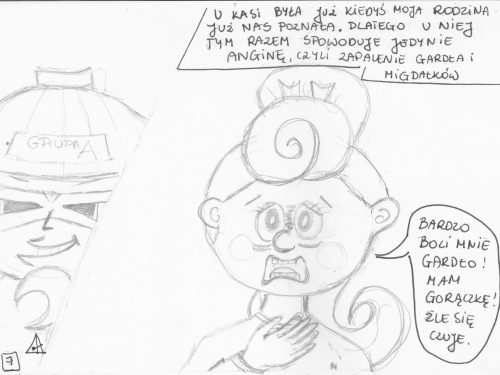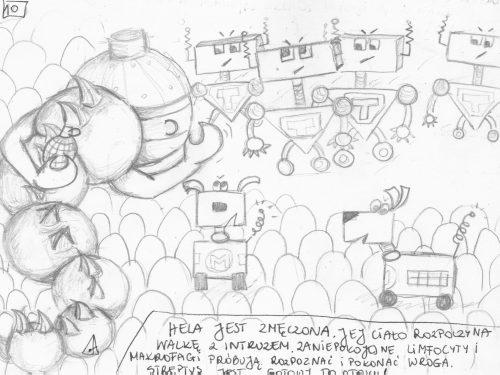
Streptus the enemy, a short story about strep throat and scarlet fever
What is this bacteria?
Streptococcus pyogenes, is a very common bacteria that attacks human body. It is included in the A group for its construction (6-12 round cell chains) and strong cellular wall which protects against attacks and is its main weapon.
In humans it can provoke throat infection, tonsilitis, ear infection or skin and subcutaneous tissue infection.
Strep throat? What is that?
I guess everyone has experienced a sore throat, but not everyone was sick with strep throat, which means pharyngitis and tonsilitis caused by streptococcus infection.
It is most often manifested by a severe sore throat combined with a high fever and fatigue. After a few days purulent raids may appear on the tonsils.
Scarlet fever? But why not strep throat?
As a result of the first contact with a new type of streptococcus (M protein type) and, at the same time, lack of resistance to its exotoxin, the child develops symptoms of infection, which we call scarlet fever.
About 2-5 days after contact with a sick person, the child suddenly develops high fever, sore throat, abdominal pain, sometimes vomiting, fatigue. Simultaneously with the fever, a specific rash appears, we observe red cheeks, and the characteristic ‘strawberry’ appearance of the tongue. Within one or few weeks of onset, desquamation process begins.
The pediatrician during the examination can find signs of pharyngitis, lymph nodes enlargement, makes a diagnosis based on typical symptoms and starts treatment.
How can I get infected?
From another sick person- the bacteria spreads by droplets
How does the bacteria attack me?
The arsenal of Streptococcus pyogenes includes
- Hyaluronic cover- it makes it harder to be recognized as a pathogen ,
- Fimbria- they enable easy attachment to human epithelial cells,
- M- protein- Over 130 of its types have been known so far – it blocks basic inflammatory reactions. It also has the characteristics of an antigen, which means that when your body tries to defend it, it will start producing specific antibodies to that particular protein. It is the main obstacle in the development of a protective vaccine against purulent streptococcus – too many types of M protein
- streptolysin O – another bacterial enzyme with antigen properties, used in the diagnosis of the disease, we mark in the blood the so-called’ ASO’ – that is, antibodies against this substance
- pyrogenic exotoxins A- C-venom of bacteria, responsible for rash formation, high fever during scarlet fever, they also have the superantigen properties, which means we gain immunity against a specific exotoxin.
Why children get sick with scarlet fever and adults usually not? It’s the same bacteria, isn’t it?
That’s true.
S. pyogenes is responsible for 15-30% of pharyngitis, i.e., almost every third patient suffered from strep throat during lifetime, some of them suffered multiple times. It is due to many types of bacteria (many types of M protein) – the body produces antibodies to the M protein only with which it has come into contact. The incidence of scarlet fever requires sensitivity to a certain type of streptococcus and a certain type of its pyrogenic exotoxin – this situation especially applies to children whose immune system is just learning and developing.
How do we treat strep throat/ scarlet fever?
It is very important to treat the disease correctly. In the case of strep throat or scarlet fever – a minimum of 10 days of antibiotic therapy is required. In the event of a relapse, which may occur due to the resistance characteristics for the bacteria, we repeat the treatment, based on a different group of antibiotics.
Is it dangerous?
Yes. Untreated or not correctly treated disease can provoke late complications, that can impair your health. Streptococcus pyogenes causes rheumatic fever, streptococcal glomerulonephritis, central nervous system diseases which are associated with streptococcal autoallergisation or toxic shock syndrome due to skin and subcutaneous tissue infection.
But how do antibiotics work?
The penicillin blocks the bacterial enzyme activity that are part of the cellular wall, which makes it more penetrable. Such damage leads to the self-digestion of the damaged bacteria. The immune system is able to properly remove the weakened and damaged bacteria.














